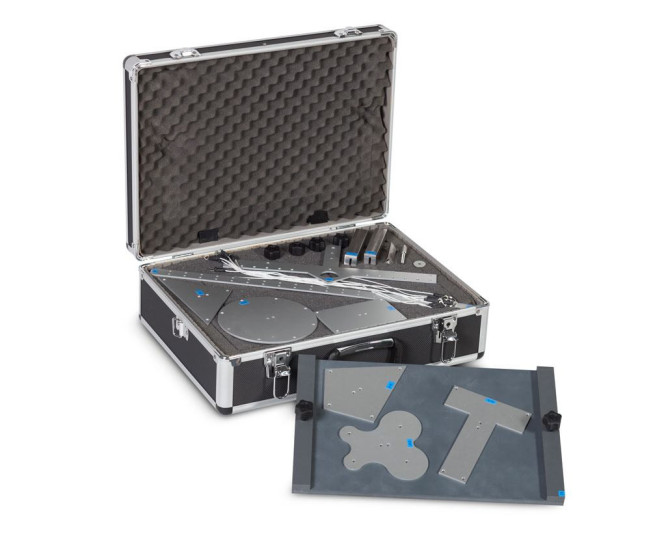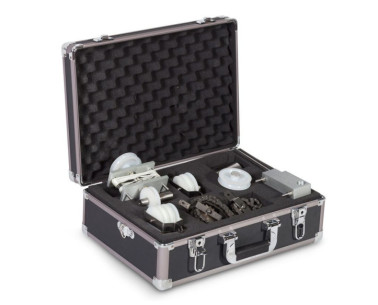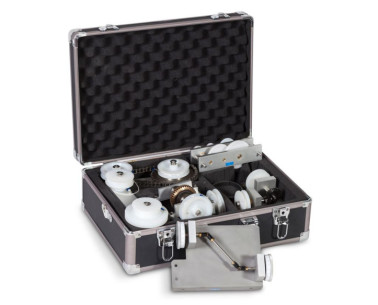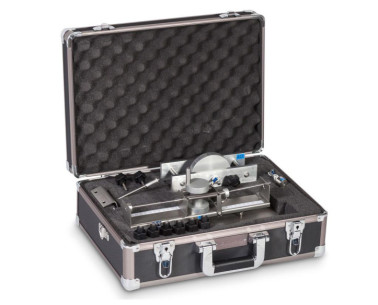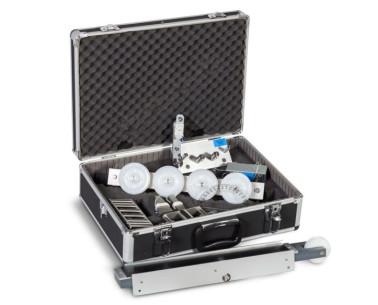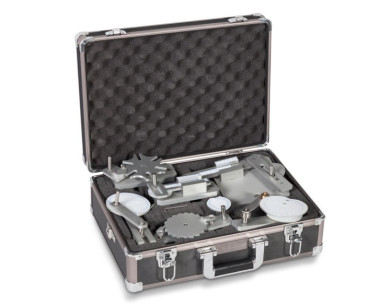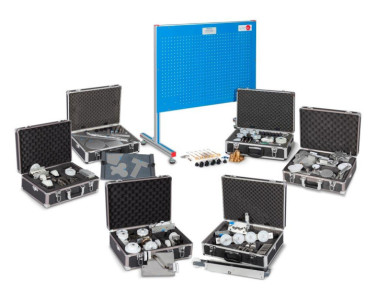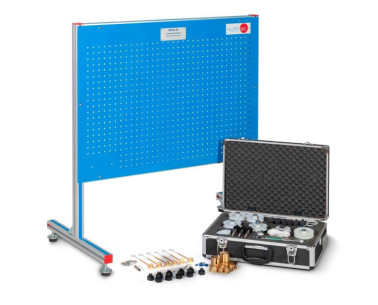MECA1 Statics Experiments
創新系統
Statics is the part of Mechanics that studies any kind of structure or element in balance-equilibrium.
化验室
相關新聞
一般說明
Statics is the part of Mechanics that studies any kind of structure or element in balance-equilibrium.
Basically the module consist on experiments in which the student shall learn to deduce the main principles of Statics and its most important applications.
練習和指導練習
手册中包含的指导实践练习
- Centres of gravity (Centres of gravity (I) and Centres of gravity (II)): Specification of the centre of gravity of plates of different shapes using the simple pendulum and graphical methods.
- Triangle of forces. To test that three non-parallel forces in equilibrium acting in the same plane can be represented by a Triangle of forces.
- Parallelogram of forces. When three non-parallel forces in the same plane are in equilibrium, their lines of action meet at a point, and hence to show that the resultant of two forces can be found using the Parallelogram of forces.
- Polygon of forces. Verification of the fact that four or more forces in equilibrium acting on the same point, can be represented by a Polygon of forces.
- Principle of moments. Verification of the principle of moments for parallel and non parallel forces.
- The Pivot or beam balance. To demonstrate that the action of weighing with a beam balance or slide balance is based upon the principle of moments.
- Levers: To determine the mechanical advantage of various types of levers using the ratio resistance/power (W/P) and to verify that this is the same as the ratio between distances.
- Beam reaction forces. Verification of the fact that a distributed load applied over a beam may be considered as an equivalent concentrated load applied at the centre of gravity of the distributed load. Reactions located at supports due to the load acting on the simply supported beam may be calculated using the momentum principle, independent of the position of these beam supports.
可用的类似设备
Transmissions Experiments
Dynamics Experiments
Friction Experiments
Special Mechanisms Experiments
配套设备
基础力学综合实验室
LIMEBA的公共元素面板和手提箱
Load Elevation Mechanisms Experiments
Transmissions Experiments
Dynamics Experiments
Friction Experiments
Special Mechanisms Experiments
質量

售後服務

 Cookies首选项
Cookies首选项

